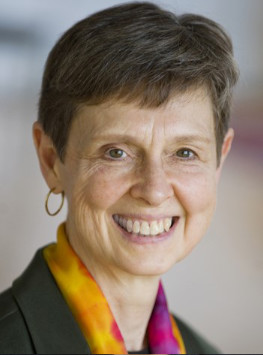Kevin Siegfried: Shaker Song Arrangements
The Shakers or the United Society of Believers in Christ's Second Appearing were one of a few religious groups which were formed during the eighteenth century in the Northwest of England. The group originated out of the Wardley Society, a group that had been founded by James and Jane Wardley, who, looking for a more personal and emotional religion than the official Church of England, broke off from the Quakers in 1747. Because the Wardleys’ version of religious worship included shakings of the body and motions of the head and arms, they came to be called “Shaking Quakers” and this in time was shortened to Shakers. In 1774, Ann Lee, who had joined the Wardley Society in 1758, received a revelation directing her to establish a Shaker Church in America. Lee, her husband, and seven members set sail for America that same year and by late 1776 she and some followers established Watervliet Village in New York, where she gathered followers until her death in 1784.
Shaker communities flourished, particularly between 1820 and 1860, considered its “golden age,” when there were 19 villages in the Northeast, Indiana, Kentucky, and Ohio. Located in rural areas away from corrupting influences of the cities, communities were agriculturally based, and men and women lived, and mostly worked, apart. Since celibacy was an important part of Shaker philosophy, they had to adopt children to recruit converts into their community. Years of prosperity ended after 1860, when their products and goods were no longer competitive in the industrialized economy that followed the Civil War. In fact, by the early twentieth century, the once numerous Shaker communities were failing and closing. Converts were hard to find, and adoption was no longer possible as new federal laws denied adoption to religious groups. Today, the only Shaker community that still exists is the Sabbathday Lake Shaker Village in New Gloucester, Maine.
A central activity of Shaker life were religious services held on Sundays at the community meetinghouse. Because services consisted of singing hymns, testimonials, a short homily, and silence, the Shakers composed thousands of songs. Seeking separation from the world, Shakers avoided all harmony and instrumental accompaniment in their music, so their hymns consist of single melodic lines, many of extraordinary grace and beauty. Although most Shaker songs are still relatively little known, as most are still hidden in archives, they are considered an important part of the American cultural heritage and of world religious music in general.
Kevin Siegfried’s first encounter with Shaker songs came in 1995 during a visit to the Shaker community at Pleasant Hill in Kentucky, one of the largest Shaker villages. “In my music, I’ve always been drawn to the rhythms and sounds of the human voice, to the purity of chant. Discovering Shaker music was, for me, a revelation. It’s an American art form, extensive in range and vast in repertoire, awaiting a voice to bring it forward to today’s audience.” He particularly credits Randy Folger, Music and Special Programs Manager at Pleasant Hill, for first bringing the Shaker music tradition “alive to my ears and imagination.”
Shaker Songs 1
“Followers of the Lamb”
“Followers of the Lamb” was composed by Clarissa Jacobs (1833-1905), active in the Mount Lebanon Shaker community in New York, showing how Shaker communities were forerunners in gender equality in the nineteenth century, as a significant amount of Shaker music was composed by women. This hymn expresses the joy of song and dance in the Shaker community and follows the form of an early American revival hymn, where verses and chorus alternate. It is still sung and held in oral tradition at Sabbathday Lake.
“I Hunger and Thirst”
This hymn originated in 1837 at the Alfred Shaker community, the oldest and largest Shaker community in Maine, and survives in oral tradition. Siegfried’s arrangement is based on a version sung by Mildred Barker (1897-1990), a musician, scholar, manager, and spiritual leader at Sabbathday Lake, who worked to preserve Shaker music. Barker also co-founded and managed The Shaker Quarterly, a magazine and journal focused on the Shakers, to which she was also a regular contributor. With the help of Daniel Patterson, publisher of The Shaker Spiritual (1979), the largest and most balanced collection of Shaker repertory, she recorded Early Shaker Spirituals (1976), a collection of Shaker songs performed by the Sabbathday Lake Shakers. One of Siegfried’s favorite Shaker songs, he wrote his arrangement of “I Hunger and Thirst” for performance at the Maine Festival of American Music, and it was premiered at Sabbathday Lake by The Portsmouth Singers, directed by himself.
“Come to Zion”
“Come to Zion” was written by Paulina Bates (1806-1884), active in the Shaker community of Mount Lebanon in New York, the first “formal” Shaker village in the United States. Bates is known for writing The Divine Book of Holy Wisdom, published in 1849 in the Era of Manifestations, where she expounds on her view of Shaker Christianity as an improved theological and social vision.
Shaker Songs 2
“Simple Gifts”
One of the best-known Shaker hymns, “Simple Gifts” was composed by Joseph Brackett (1797-1882), who spent his life at the Poland Hill Shaker Village in Maine. In Siegfried’s words, “It took Doug Fullington of the Seattle-based Tudor Choir a lot of coercion to get me to create an arrangement of “Simple Gifts,” a song that was popularized by Aaron Copland’s Appalachian Spring, and perhaps the only Shaker song that is widely known outside of the Shaker world.” Siegfried adds “The goal of my Shaker Harmony Collection from the beginning was to bring attention to the wealth of Shaker music beyond the tune “Simple Gifts,” so it definitely took me a while to find a point of entry and way of approaching with a fresh perspective. In the end, I found inspiration in the exuberant choral texture of the South African folk song “Hamba Ka Ncane.” “Simple Gifts” should be performed with that same energy and approach to sonority.”
“Gentle Words”
“Gentle Words” was written by Polly M. Rupe (1826-1875), a prolific composer at Pleasant Hill Shaker community in Kentucky. Like thousands of songs in the Shaker music tradition, “Gentle Words” had fallen out of oral tradition in the early twentieth century but was rediscovered in 1974 by Shaker music scholar Roger Hall in a music manuscript at the Shaker Historical Society in Ohio. The text addresses a core aspect of being human, the Golden Rule, found in virtually all religions and cultures. Siegfried wrote this arrangement in 2000, a year after the passing of his friend Randy Folger, who loved to sing it, projecting its beauty, and meaning through his voice and personality. The arrangement is dedicated to him.
“Vum Vive Vum”
The original tune of “Vum Vive Vum” dates from 1844 and is a lively example of a Shaker dance song. The use of vocables was a common feature of early Shaker music, particularly in the repertoire used for dance. The vocal sounds used represent a uniquely American form of “mouth music,” a style of traditional singing where nonsense words are used to mimic the sounds of an instrument or the rhythms of a dance, and in the case of this piece, the sound of drums. “Vum Vive Vum” is the central movement of Siegfried’s Angel of Light, a cantata based on Shaker themes and rooted in a distinctive period in Shaker history called the Era of Manifestations. This phase began in 1837 when young girls at the Shaker community of Watervliet in New York, began entering trances and reporting visions.
Carole Barnett: The World Beloved: A Bluegrass Mass
The World Beloved: A Bluegrass Mass (2007) is a twelve-movement work for SATB choir and bluegrass band by composer Carol Barnett and librettist Marisha Chamberlain. The work was commissioned in 2006 by VocalEssence, a choir founded in 1969 and based in Minneapolis, under the leadership of its financial advisor, treasurer, and patron Michael McCarthy, a Bluegrass enthusiast, and a serious advocate for new music. VocalEssence premiered The World Beloved in 2007 under the direction of conductor and founder Philip Brunelle with Monroe Crossing as the accompanying bluegrass band at Trinity Lutheran Church in Stillwater, Minnesota, with a second performance on the following day at Ted Mann Concert Hall at the University of Minnesota in Minneapolis. Since then, The World Beloved has grown in popularity, as it has been performed hundreds of times, often with Monroe Crossing as the accompanying band.
Although The World Beloved combines the sacred formal choral tradition of the five Mass Ordinary movements with the improvisation-based folk music of bluegrass, it is considered a concert mass, a practice that dates from the early nineteenth century when church officials urged composers to create church music that sounded more like secular concert music. This idea was expanded in the twentieth century when composers, interested in creating a genre that could be used outside of its traditional Christian heritage, began to write interfaith works, which draw upon the liturgy of the Mass for their structure but mingle sacred texts of different religious and spiritual traditions freely.
For The World Beloved, Chamberlain used this non-traditional approach including her own interpretation of the Kyrie, Gloria, and Credo, keeping the Latin versions for the Sanctus and Agnus Dei, and inserting five original poems between the Mass movements that reflect her life experiences and Buddhist practices. “I was raised Catholic by parents who were both converts and especially fervent for that reason, and I knew the Mass backwards and forwards.” As a practicing Buddhist, however, she intended to reinterpret the Mass to include her own beliefs, such as referring to God as “She” not “He.” The dramatic refrain of her poem serves to frame the piece: “God loved the World so dear He set aside His crown and cloaked Himself in human shape.”
Just as Chamberlain’s Catholic upbringing and Buddhist practice allowed her to create an interfaith text, Barnett’s approach towards style allowed her to write a “multicultural” work that has been called “choral crossover” and “fusion,” where she combines Western musical characteristics with musical elements derived from bluegrass. Bluegrass music came out of the rural south after World War II, but its roots date back to the 1930s, as a synthesis of American southern string band music, blues, English, Irish, and Scottish traditions, and sacred and country music. The genre was named after Bill Monroe's band The Blue Grass Boys who began performing in the 1940s. Bluegrass songs are about issues important to everyday people, focusing on love, home, and family, sometimes exploring the darker side of these issues. Barnett uses the five instruments typical of bluegrass: fiddle, mandolin, banjo, guitar, and string bass, where the banjo has a major solo role, emphasizing melodic over rhythmic aspects, and the guitar and bass carry the downbeat and provide the rhythmic foundation. She also effectively incorporates the idiomatic writing of bluegrass, such as folk melodies, high energy rhythm, and fast tempo. The fusion of two styles makes The World Beloved a truly original work that expresses the broader worldview of a “multi-faith” work, capturing what Barnett described as “an unpretentious, earth philosophy that is easy to sing and easy to understand.”
Songs of the Traveller
“Poor Wayfaring Stranger,” arr. by Keith Christopher
The well-known American folk and gospel song “Poor Wayfaring Stranger,” likely originating in the early nineteenth century, narrates a plaintive soul on the journey through life. As with most folk songs, many variations of the lyrics exist and many versions of this song have been published over time by popular singers, often being linked to times of hardship and notable experiences in the singers' lives. It is possible that the lyrics were first published in Joseph Bever's Christian Songster (1858), a collection of popular hymns and spiritual songs. During and for several years after the American Civil War, the lyrics were known as the Libby Prison Hymn, as the words had been inscribed by a dying Union soldier incarcerated in Libby Prison, a warehouse converted to a notorious Confederate prison in Richmond, Virginia. Members of the Western Writers of America chose it as one of the Top 100 Western songs of all time.
“Now Is the Cool of the Day,” arr. by Kevin Siegfried
“Now Is the Cool of the Day” was written by Jean Ritchie (1922-2015), one of the best known and most respected singers of traditional ballads in the United States. Her understanding of the Appalachian folk tradition was so deep that many of her original songs might easily be mistaken as traditional folk songs themselves. “Now Is the Cool of the Day” gently yet powerfully calls us to be greater stewards of the earth, environment, and human rights. The chorus alludes to Genesis 3:8 (“And they heard the voice of the Lord God walking in the garden in the cool of the day”) but portrays Eden as the garden we inhabit and must care for in the present day. Originally released on Ritchie’s 1977 recording None but One, the song has found its way into the repertoire of numerous folk artists, and has been used as an anthem to voice opposition to mountaintop removal mining in the Appalachian Mountains.
“I’ll Fly Away,” arr. by Kevin Siegfried
The arrangement of “I’ll Fly Away” for SATB chorus and bluegrass ensemble was commissioned by Marie Baroni Allen, a member of the Commonwealth Chorale, in celebration of her husband Jim Allen’s 85th birthday, and is receiving its premiere performance today. “I’ll Fly Away” was written in 1929 by Albert E. Brumley (1905-1977), who was born in Oklahoma to a family of sharecroppers. Brumley wrote over 800 songs and was inducted into the Nashville Songwriters Hall of Fame, Gospel Music Hall of Fame, and Oklahoma Music Hall of Fame. Since its first publication in 1932, “I’ll Fly Away” has become one of the most beloved and frequently recorded gospel songs in history. It has appeared in countless hymnals and is a standard at both bluegrass jam sessions and funerals. In his arrangement, Siegfried invokes the energy and spirit of the country gospel single recorded by James and Martha Carson and released by Capitol Records in 1951.



